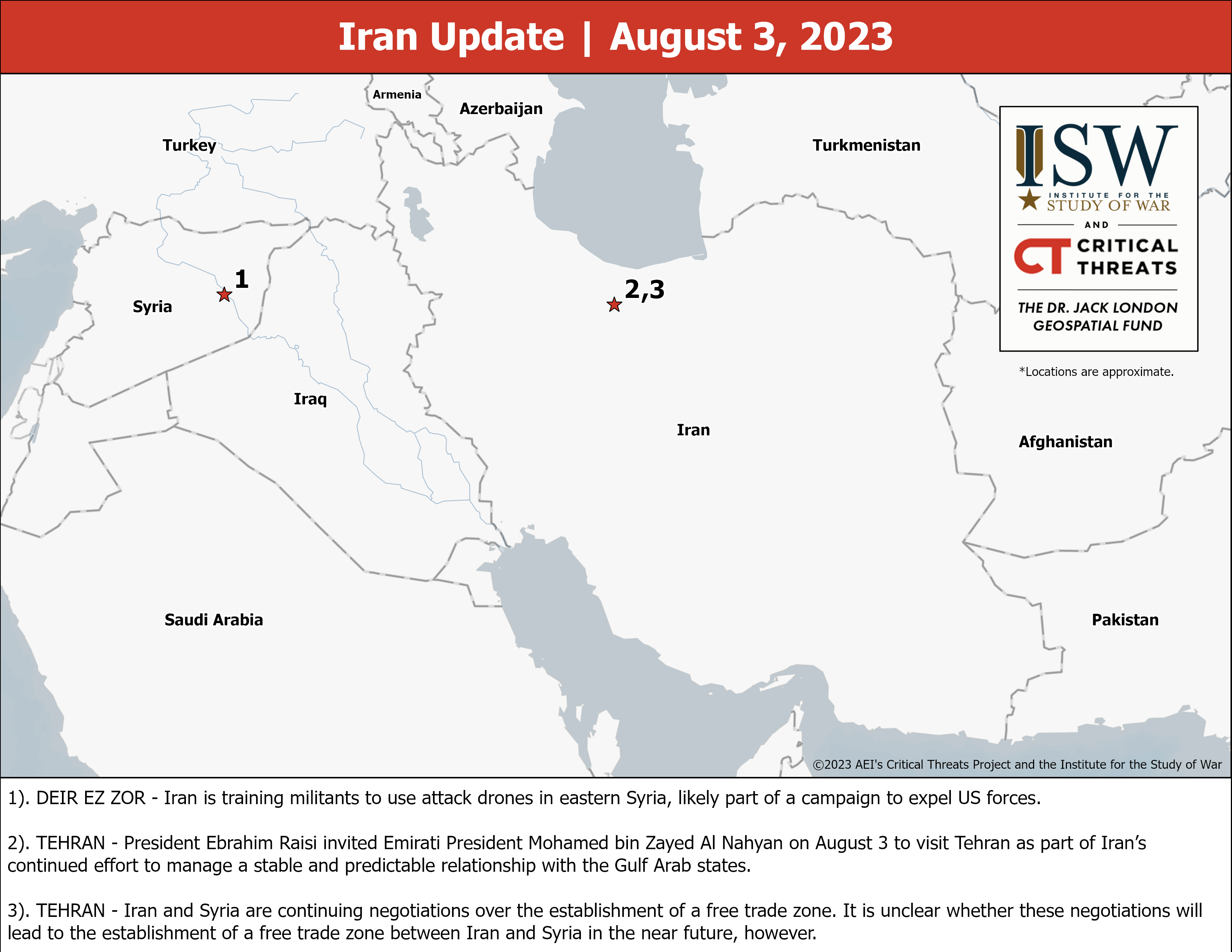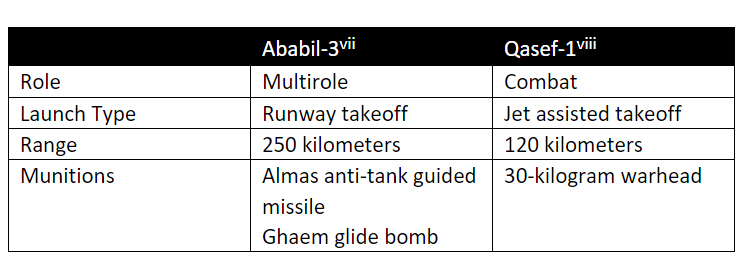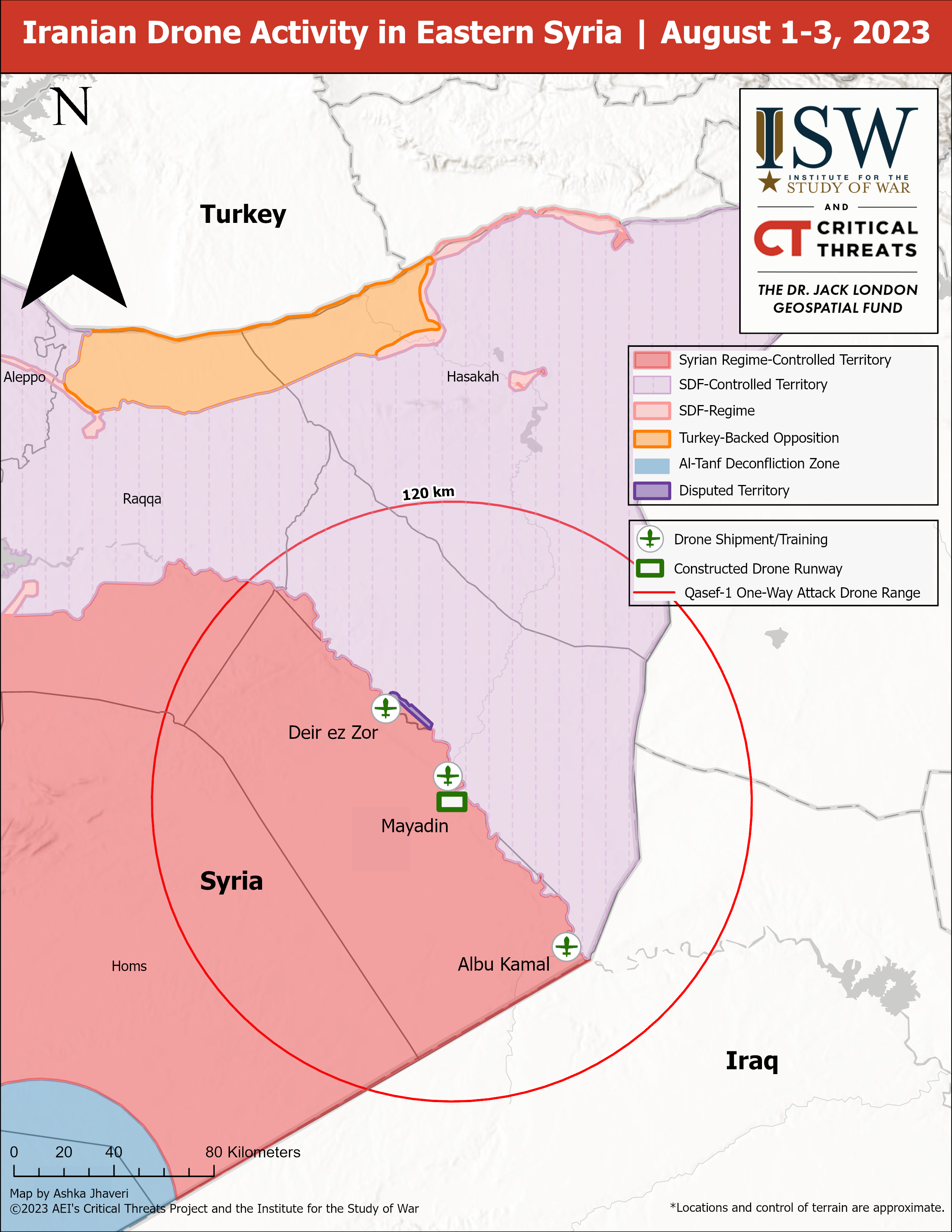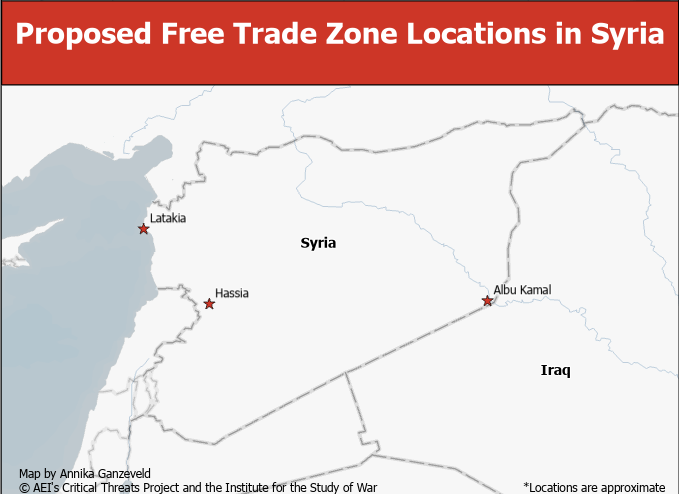 |
 |
Iran Update, August 3, 2023
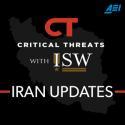
Iran Update, August 3, 2023
Amin Soltani, Ashka Jhaveri, and Annika Ganzeveld
The Iran Update aims to inform national security policy by providing timely, relevant, and independent open-source analysis of developments pertaining to Iran and its Axis of Resistance. This update covers political, military, and economic events and trends that affect the stability and decision-making of the Iranian regime. It also provides insights into Iranian and Iranian-sponsored activities abroad that undermine regional stability and threaten US forces and interests. The Critical Threats Project (CTP) at the American Enterprise Institute with support from the Institute for the Study of War (ISW) provides these updates Monday through Friday. To receive Iran Updates via email, please subscribe here.
The Institute for the Study of War (ISW) with support from the Critical Threats Project (CTP) at the American Enterprise Institute launched a new interactive map of Iran and the Middle East. The map depicts events in Iran that affect the stability of the Iranian regime, namely anti-regime protests and reported poisoning incidents. It also shows developments in Syria that jeopardize regional stability and pose threats to US forces and interests, including Iranian and Iranian-backed militia positions.
Key Takeaways
- Iran is training militants to use attack drones in eastern Syria, likely part of a campaign to expel US forces.
- President Ebrahim Raisi invited Emirati President Mohamed bin Zayed Al Nahyan on August 3 to visit Tehran as part of Iran’s continued effort to manage a stable and predictable relationship with the Gulf Arab states.
- Iran and Syria are continuing negotiations over the establishment of a free trade zone. It is unclear whether these negotiations will lead to the establishment of a free trade zone between Iran and Syria in the near future, however.
Iranian Activities in the Levant
This section covers Iranian efforts to consolidate and expand Tehran’s economic, military, and political influence throughout the Levant especially in Syria. This section examines some of the many campaigns that Iran is pursuing to achieve this strategic objective. CTP will update and refine our assessments of these campaigns over time and in future updates.
Iran is training militants to use attack drones in eastern Syria, likely part of a campaign to expel US forces. Iranian-backed militias tested one-way attack drones on August 2 at an Islamic Revolutionary Guards Corps Quds Force (IRGC QF) headquarters in Deir ez Zor.[1] Local media reported on August 3 that over 170 militants from Hasakah Province traveled to Mayadin and Albu Kamal for training on attack drones and short-range rockets.[2] The 170 militants will return to Hasakah Province to carry out unspecified missions after the training.[3] Iranian-backed militias have previously used drones to attack and surveil US bases, including attacking the Al Tanf Garrison on January 20 and a base in Hasakah on March 23, which resulted in the death of a US contractor.[4] Iran has increased its military and logistical capabilities in Hasakah Province since early 2022.[5] Iran maintains some military facilities in Hasakah, which are closer to several US bases in SDF-controlled territory.[6]
CTP has observed the following attack drones in Deir ez Zor Province in 2023, which Iran could use to attack US forces:
CTP has observed Iran preparing to resume its campaign to expel US forces from the Middle East since early June. Iran has recruited, armed, and trained militias with resources and capabilities necessary to conduct a prolonged offensive campaign on US forces in Syria. Iranian-backed militias have deployed to the Syrian desert surrounding the Al Tanf Deconfliction Zone which surrounds the US Al Tanf Garrison, deployed to contact lines with the SDF in Deir ez Zor Province, as well as moved military materiel to both areas. Iran recruited local Syrians in SDF-controlled territory to support a grassroots resistance to expel the United States from Syria, including recruiting for sleeper cells identify US positions, plant explosive devices, and spread clan strife in the region.[9] Local militia leaders, such as Nawaf al Bashir, who leads the Baqir Brigade, Hashem Masoud al-Sattam leader of the Usud al Akidat militia, and Abdul Qadir Hamo commander of the National Defense Forces in Hasakah Province, have worked with the IRGC QF to recruit locals for these purposes.[10]
Iranian Domestic and Political Affairs
This section covers factors and trends affecting regime decision-making and stability. CTP will cover domestic politics, significant protest activity, and related issues here.
President Ebrahim Raisi invited Emirati President Mohamed bin Zayed Al Nahyan on August 3 to visit Tehran as part of Iran’s continued effort to manage a stable and predictable relationship with the Gulf Arab states.[11] Senior Iranian officials embarked on a course of diplomatic engagements with the Gulf Arab states, including the UAE, to deescalate tensions and pursue economic cooperation following Iran normalizing relations with Saudi Arabia on March 10, as CTP previously reported.[12] Supreme National Security Council (SNSC) Secretary Ali Shamkhani traveled to the UAE on March 16 and met with Emirati President Mohammad bin Zayed al Nahyan and National Security Adviser Tahnoon bin Zayed al Nahyan to discuss bilateral ties and regional security.[13] He is the most senior Iranian official to visit the country since President Mahmoud Ahmadinejad in 2007.[14] Foreign Affairs Ministry Political Deputy Ali Bagheri Kani announced the appointment of Reza Ameri as Iran’s ambassador to the UAE on April 4.[15] Ameri is the first Iranian ambassador to the UAE in eight years.
Iran very likely seeks to advance the following objectives specifically vis-a-vis the UAE during bin Zayed’s visit:
- Sanctions evasion. Iran has used businesses in Emirati commercial centers to circumvent US sanctions over the past decade.[16] Central Bank Governor Mohammad Reza Farzin and Foreign Affairs Minister Hossein Amir Abdollahian engaged Emirati officials between March 16 and 21 to discuss the monetary, banking, foreign exchange, and private business interactions.[17] These economic and financial interactions facilitate Iranian efforts to bypass US sanctions.
- Broader economic cooperation and investment. The Raisi administration is advancing its ”neighborhood policy,” which is an economic policy that aims to buoy the Iranian economy and mitigate the effects of sanctions by building relations with regional and extra-regional states.[18] Abdollahian visited several GCC states, including the UAE, between June 19 and 22 as part of this policy and discussed increasing economic cooperation through trade, energy, transportation, banking, communications technology, and private business.[19] Iran is furthermore seeking Emirati investment in railway construction along the International North-South Transportation Corridor.[20] Iran has attached importance to developing the International North-South Transport Corridor (INSTC), a transit route connecting Russia and Central Asia to the Persian Gulf via Iran, to bolster Iran’s economy in recent years.[21] Supreme Council of Free Trade-Industrial and Special Economic Zones Secretary Hojjatollah Abdolmaleki furthermore reported on August 3 that the UAE plans on investing 100 billion dollars in the Iranian economy.[22]
- Capitalize on perceived tensions to weaken the US-led maritime security partnership in the Persian Gulf. The Emirati Foreign Affairs Ministry stated on May 31 that the UAE suspended participation in the US-led Combined Maritime Force, a multinational naval partnership dedicated to ensuring freedom of navigation.[23] Artesh Navy Commander Rear Admiral Shahram Erani stated on June 2 that the regional states will be able to establish security for themselves without the presence of any “unjustified force,” referring to the United States.[24] Iranian media also reported on June 2 that China is overseeing negotiations between Iran, Saudi Arabia, the UAE, Qatar, Bahrain, Oman, Iraq, India, and Pakistan to form a joint maritime security force in the Persian Gulf.[25]
- Discuss recent tensions over disputed Islands. Iran seized the islands of Abu Musa and the Greater and Lesser Tunbs in 1971 shortly after the British withdrawal from the area. The UAE has disputed Iran’s claim to the Islands. Tensions over the issue resumed once China and the Gulf Cooperation Council (GCC) published a joint statement calling for negotiations between Iran and the UAE over the three Iranian-controlled islands in December 2022.[26] Russia and the GCC countries similarly issued a joint statement calling for negotiations over the islands on July 10.[27] Iranian officials have responded by condemning both statements and summoning the Chinese and Russian ambassadors to the Foreign Affairs Ministry.[28] The IRGC Navy also held one of its annual exercises on Abu Musa on August 2 to reaffirm control over the disputed islands, as CTP previously assessed.[29] IRGC Commander Major General Hossein Salami and IRGC Navy Commander Rear Admiral Ali Reza Tangsiri stated on the sidelines of the exercise that Iran will strongly defend its territorial integrity.[30]
Iran and Syria are continuing negotiations over the establishment of a free trade zone. It is unclear whether these negotiations will lead to the establishment of a free trade zone between Iran and Syria in the near future, however. Iranian Free and Special Economic Zones Supreme Council Secretary Hojatollah Abdol Maleki discussed establishing a free trade zone between Iran and Syria during a meeting with Syrian Economy and Foreign Trade Minister Mohammad Samer al Khalil and Syrian Ambassador to Iran Shafiq Dayoub in Tehran on August 2.[31] Khalil stated that Iran and Syria seek to establish a free trade zone in Latakia, Al Bukamal, and Hassia, Syria. Latakia is a major port in western Syria, Al Bukamal is near the Iraq-Syria border, and Hassia is located on the M5 highway between Homs and Damascus, Syria.[32] Khalil added that Iranian and Syria officials have held “several” meetings about the establishment of this economic zone. Abdol Maleki announced on May 6 following President Ebrahim Raisi’s May 3-5 trip to Syria that plans to establish a free trade zone between Iran, Iraq, and Syria had entered a “technical and implementation stage.”[33] The Syrian and Iranian officials did not mention Iraq’s role in establishing a free trade zone during their August 2 meeting. A free trade zone through Syria, Iraq, and Iran would allow Iran to move materiel across borders without oversight that would normally enforce sanctions on trade with Syria and Iran.[34]
[1] https://www.syriahr.com/%d8%a7%d9%84%d8%ad%d8%b1%d8%b3-%d8%a7%d9%84%d8%ab%d9%88%d8%b1%d9%8a-%d8%a7%d9%84%d8%a5%d9%8a%d8%b1%d8%a7%d9%86%d9%8a-%d9%8a%d8%b3%d8%aa%d9%82%d8%af%d9%85-%d9%85%d8%b3%d9%8a%d9%91%d8%b1%d8%a7%d8%aa/672435/
[2] https://eyeofeuphrates (dot) com/ar/news/2023/08/03/9325
[3] https://eyeofeuphrates (dot) com/ar/news/2023/08/03/9325
[4] https://twitter.com/CENTCOM/status/1625676190877876225; https://www.defense.gov/News/Releases/Release/Article/3339691/us-conducts-airstrikes-in-syria-in-response-to-deadly-uav-attack/; https://www.reuters.com/world/middle-east/drones-target-us-outpost-syria-no-american-injuries-2023-01-20/#:~:text=Jan%2020%20%28Reuters%29%20-%20Three%20drones%20targeted%20a,two%20members%20of%20the%20Syrian%20Free%20Army%20forces
[5] https://www.mei.edu/publications/irans-growing-presence-syrias-al-hasakah-poses-direct-threat-us-forces
[6] https://www.mei.edu/publications/irans-growing-presence-syrias-al-hasakah-poses-direct-threat-us-forces
[7] https://www.criticalthreats.org/analysis/irans-drone-inventory-and-potential-sales-to-russia
[8] https://www.militaryfactory.com/aircraft/detail.php?aircraft_id=2155
[9] https://deirezzor24 (dot) net/en/the-iranian-revolutionary-guard-militia-is-planting-and-operating-cells-in-sdf-held-areas/
[10] https://eyeofeuphrates.com/ar/news/2023/08/03/9325
[11] https://www.reuters.com/world/middle-east/irans-president-raisi-officially-invites-uae-president-visit-tehran-tasnim-2023-08-03/ ; https://www.irna dot ir/news/85188257
[12] https://www.criticalthreats.org/analysis/iran-update-march-10-2023 ; https://www.criticalthreats.org/analysis/iran-update-march-16-2023 ; https://www.criticalthreats.org/analysis/iran-update-june-22-2023
[13] https://www.tasnimnews dot com/fa/news/1401/12/25/2868554 ; https://www.irna dot ir/news/85059334
[14] https://www.reuters.com/article/us-emirates-iran-ahmadinejad/iran-president-starts-first-official-visit-to-uae-idUSL1331465520070513
[15] https://www.isna dot ir/news/1402011506438
[16] https://www.fdd.org/analysis/2020/03/20/uae-continues-to-serve-as-hub-for-iranian-sanctions-evasion/
[17] https://www.tasnimnews dot com/fa/news/1401/12/25/2868508 ; https://www.irna dot ir/news/85063291 ; https://mfa dot ir/portal/NewsView/714785 ; https://www.fdd.org/analysis/2020/03/20/uae-continues-to-serve-as-hub-for-iranian-sanctions-evasion/ ; https://www.criticalthreats.org/analysis/iran-update-march-16-2023 ; https://www.criticalthreats.org/analysis/iran-update-march-22-2023
[18] https://www.criticalthreats.org/analysis/iran-update-june-22-2023 ; https://www.criticalthreats.org/analysis/iran-update-june-21-2023 ; https://www.criticalthreats.org/analysis/iran-update-june-20-2023 ; https://www.criticalthreats.org/analysis/iran-update-may-31-2023 ;
[19] https://mfa dot ir/portal/NewsView/722758 ; https://mfa dot ir/portal/NewsView/722800 ; https://mfa dot ir/portal/NewsView/722795 ; https://mfa dot ir/portal/NewsView/722798 ; https://mfa dot ir/portal/NewsView/722794 ; https://mfa dot ir/portal/NewsView/722765 ; https://mfa dot ir/portal/NewsView/722639 ; https://www.irna dot ir/news/85147562 ; https://www.irna dot ir/news/85147574
[20] https://financialtribune dot com/articles/domestic-economy/118120/iran-uae-explore-expansion-of-investments-in-transport-plans
[21] https://www.criticalthreats.org/analysis/iran-update-july-27-2023 ; https://www.criticalthreats.org/analysis/iran-update-june-16-2023- ; https://www.criticalthreats.org/analysis/iran-update-may-17-2023 ;
[22] https://www.entekhab dot ir/fa/news/736030
[23] https://www.nytimes.com/2023/05/31/world/middleeast/uae-us-iran-maritime-security.html ; https://wam dot ae/ar/details/1395303163664
[24] https://defapress dot ir/fa/news/593832
[25] https://nournews dot ir/Fa/news/140738 ; https://t dot co/vbCI9yWiaq ; https://t dot co/5S0d83UzQB
[26] https://www.fmprc dot gov.cn/eng/zxxx_662805/202212/t20221208_10986939.html#:~:text=On%20the%20afternoon%20of%20December,the%20Kingdom%20of%20Saudi%20Arabia ;
[27] https://www.cnbc.com/2023/07/12/iran-at-odds-with-allied-russia-after-moscow-backs-uae-in-island-dispute.html
[28] https://www.aljazeera dot com/news/2022/12/11/iran-summons-china-envoy-over-disputed-islands-with ; https://www.tasnimnews dot com/fa/news/1402/04/21/2924803 ; https://www.criticalthreats.org/analysis/iran-update-july-12-2023
[29] https://www.criticalthreats.org/analysis/iran-update-august-2-2023
[30] https://www.tasnimnews dot com/fa/news/1402/05/11/2934863 ; https://en.irna dot ir/news/85187518
[31] https://www.tasnimnews dot com/fa/news/1402/05/11/2934991;
https://dolat dot ir/detail/417164
[32] https://www.google.com/maps/place/Hassia,+Syria/@34.4105729,36.7484522,15z/data=!3m1!4b1!4m6!3m5!1s0x1522fb15a3850f2d:0x5890208e79bcc86e!8m2!3d34.4098757!4d36.7550147!16s%2Fm%2F0k2j65h?entry=ttu ;
https://www.britannica.com/place/Latakia-Syria
[33] https://www.imna dot ir/news/659485
[34] https://www.criticalthreats.org/analysis/iran-update-may-8-2023#_ednc223e3430950f0011b258a47a52a3df03
